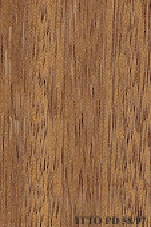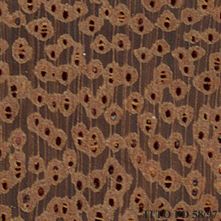
MORA (Mora megistosperma)
Nombre comercial
Mora
Nombre científico (con autor)
Mora megistosperma (Pittier) Britton & Rose
Familia
LEGUMINOSAE
Nombres Comunes
Pracuuba-Vermelha (Brazil); Pracuuba-Da-Várzea (Brazil); Pracuuba-Amarela (Brazil); Pracuuba (Brazil); Praculiba-Branca (Brazil); Mora (Venezuela); Nato (Ecuador); Alcornoque (Colombia); Mangle Nato (Colombia); Alcornoque (Panama); Alcornoque (Costa Rica); Pracouba (Brazil); Nato (Colombia); Paracuuba (Brazil)
Nombres científicos sinónimos (con autores)
Mora oleifera (Triana ex Hemsl.) Ducke; Dimorphandra oleifera Triana ex Hemsl.; Dimorphandra megistosperma Pittier
DESCRIPCIÓN DEL ÁRBOL
Descripción botánica
Tree size is reported to attain a height of about 30 m, with a trunk diameter that can reach up to 80 or 100 cm over the buttresses. The boles are cylindrical or sometimes irregular, with commercial lengths of about 15 m. It presents slim and tall buttres
Hábitat natural
Mora megistosperma occurs gregariously in the varzea forests and in swampy areas along river banks and temporarily inundated forests. It is also reported growing at the sea level in tidal areas and in mangrove forests.
Distribución natural
Central and northern South America. It is reported in Costa Rica, Panama, Venezuela, Brazil, Colombia and Ecuador.
IDENTIFICACIÓN DE LA MADERA
Descripción anatómica de la madera
Wood diffuse porous. Vessels solitary and in short radial multiples. Tangential diameter of vessel lumina 150 to 200 micras (medium). Vessels per mm2 5 to 20. Simple perforation plates. Vessel-ray pits similar to intervessel pits in size and shape. Intervessel Axial parenchyma apparent with the naked eye. Axial parenchyma lozenge-aliform. Axial parenchyma confluent. Prismatic crystals in chambered axial parenchyma cells and/or in fibers. 3 to 4 cells per parenchyma strand. 4 to 10 rays per mm (medium). Rays 1 to 4 seriate. Homogeneous rays and/or sub-homogeneous rays (all ray cells procumbent). Fibers with simple to minutely bordered pits.
-
 Foto macroscópica de la madera, plano tangencial
Foto macroscópica de la madera, plano tangencial
-
 Foto microscópica sección transversal de la madera
Foto microscópica sección transversal de la madera
Disponibilidad
Status de protección por CITES
Unrestricted
DESCRIPCIÓN GENERAL DE LA MADERA
Color
The sapwood is pinkish white, the heartwood is yellowish red with a dark brown tinge.
Indice de Color (1= Negro, violeta; 7= Amarillo claro, blanco)
4
Grano
This species is reported to have interlocked grain.
Veta
The wood is mostly medium in texture.
Brillo
The wood surface is described as moderate in luster.
Durabilidad Natural
It is resistant to decay, dry wood insects and termites attack.
Indice de Durabilidad Natural (1=Muy alta, 7=Muy baja)
2
PROPIEDADES FÍSICAS DE LA MADERA
Densidad Básica (Peso anhidro/Vol. saturado) (g/cm³)
0.72
Densidad seca al aire (Peso y volúmen CH12%) (g/cm³)
0.81
Contracción Tangencial Total (Saturado hasta anhidro) (%)
7.2
Contracción Radial Total (Saturado hasta anhidro) (%)
4.0
Defectos por secado
Ease of Drying: The rate of drying is reported to be slow to moderate. Drying Defects: Twisting and cupping are reported.
Calendario de Secado
UK-B; US-T2-C2
Estabilidad Dimensional (Contracción Total Tangencial %/Contracción Total Radial %)
1.8
PROPIEDADES QUÍMICAS DE LA MADERA
PROPIEDADES MECÁNICAS DE LA MADERA
Resistencia a flexión (Módulo de ruptura) CH12% (kgf/cm²)
1265
Rigidez (Módulo de elasticidad) CH12% (kgf/cm²)
155000
Resistencia a la compresión paralela a la fibra CH12% (kgf/cm²)
606
Resistencia a la compresión perpendicular a la fibra CH12% (kgf/cm²)
94
Cizallamiento radial CH12% (kgf/cm²)
96
Dureza Janka (lados) CH12% (kgf)
560
Dureza Janka (extremos) CH12% (kgf)
760
TRABAJABILIDAD
Aserrado
Sawing of this species is reported to be rather difficult.
Corte de chapa rotativa
It is not suitable for plywood because of its high density.
Chapa tranchada
It is not suitable for plywood because of its high density.
Pérdida de filo_romado
Wood of this species produces a moderate blunting effect.
Cepillado
The timber is reported to plane with moderate difficulty because of interlocked grain. A reduced cutting angle of 20 degrees is recommended.
Torneado
30
Clavado
Good nail-holding, pre-boring is necessary.
Encolado
This species has a fair behavior in gluing.
Lijado
The material is reported to sand with moderate difficulty.
Acabado
This wood yields a smooth surface in finishing.
Doblar al vapor
Bending properties are reportedly moderate.
Usos Reportados
USOS FINALES (RESUMEN)
EXTERIOR GENERAL, bridges, poles, crossties, HOUSING GENERAL, flooring, steps, FURNITURE AND CABINETS, PLYWOOD AND VENEER, TURNING, TOOLS, agricultural tools, CONTAINERS, truck bodies, NAVAL CONSTRUCTION, boats, port pillar, port storage, OTHER AND MUSICAL INSTRUMENTS, handicrafts
EXTERIOR GENERAL
- 1 - Tabela de resultados de ensaios fisicos e mecanicos
Puentes
- 2 - 25 madeiras da amazonia de valor comercial, caracterizacao, macroscopica, usos comuns e indices qualificativos
Postes de transmisión
- 3 - Estudo dendrologico e determinacao das caracteristicas fisicas e mecanicas do genipapo (Genipa americana)
Durmientes
- 8 - Maderas latinoamericas. III, Podocarpus standleyi ,Podocarpus oleifolius, Drims granadensis, Magnolia poasana y Didymopanax pittieri
VIVIENDA GENERAL
- 10 - Silica in Timbers
Pisos
- 14 - Handbook of Hardwoods
Peldaños
- 17 - Tree Conservation Database
MUEBLES Y GABINETES
- 21 - Tropical timbers of the world. Part III-Southeast Asian and Oceanian Species.
TABLEROS Y CHAPAS
- 25 - Directory of Timber Trade Malaysia
Torneado
- 30 - Embassy of Honduras in Japan
HERRAMIENTAS
- 42 - Utilización Industrial de Nuevas Especies Forestales en el Perú.
Mangos agrícolas
- 44 - Atlas of Peruvian Woods
Carrocería de camión
- 53 - Timbers of the New World
CONSTRUCCIÓN NAVAL
- 55 - Tropical Timber Atlas of Latin America
Botes
- 56 - Manual de Identificación de Especies Forestales de la Subregión Andina.
Puertos_pilares
- 61 - Manual de Diseño para Maderas del Grupo Andino
Puertos_estantería
- 62 - Estudio Tecnológico de Maderas del Perú (Zona Pucallpa) Vol I
artesanía
- 66 - Maderas latinoamericanas. VII. Caracteristicas anatomicas. propiedades fisicomecanicas, de secado, y tratabilidad de la madera juvenil de Cordia alliodora (Ruiz & Pav. Oken.)
Please Provide Information To View Producer Information